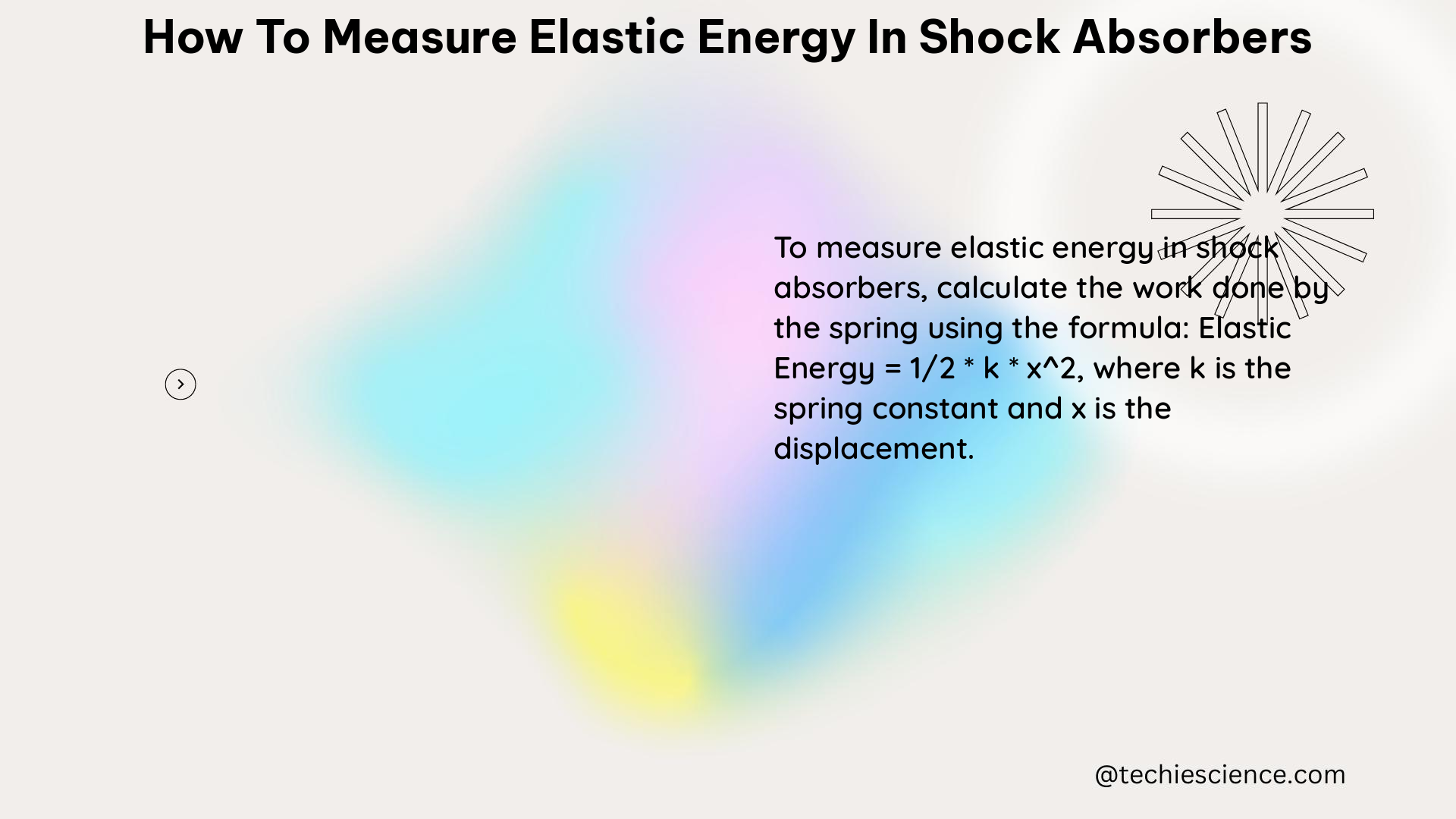Summary
Measuring the elastic energy stored in shock absorbers is a crucial step in understanding their performance and optimizing their design. This comprehensive guide will walk you through the step-by-step process of measuring the elastic energy in shock absorbers, providing you with the necessary physics formulas, theorems, and practical examples to ensure a thorough understanding of the topic.
Measuring the Shock Absorber’s Dimensions

The first step in measuring the elastic energy stored in a shock absorber is to determine its physical dimensions. This includes the length, diameter, and cross-sectional area of the shock absorber. The cross-sectional area can be calculated using the formula:
A = πr²
where A is the cross-sectional area and r is the radius of the shock absorber.
Measuring the Force Applied to the Shock Absorber
The next step is to measure the force applied to the shock absorber. This can be done using a force gauge or dynamometer. The force can be calculated using the formula:
F = ma
where F is the force, m is the mass, and a is the acceleration.
Measuring the Displacement of the Shock Absorber
The displacement of the shock absorber is measured using a displacement sensor or dial gauge. The displacement can be calculated using the formula:
Δx = xf - xi
where Δx is the displacement, xf is the final position, and xi is the initial position.
Calculating the Elastic Energy Stored in the Shock Absorber
The elastic energy stored in the shock absorber can be calculated using the formula:
U = ½k(Δx)²
where U is the elastic energy, k is the spring constant, and Δx is the displacement.
The spring constant can be calculated using the formula:
k = F/Δx
where k is the spring constant, F is the force, and Δx is the displacement.
Measuring the Damping Force of the Shock Absorber
The damping force of the shock absorber can be measured using a force gauge or dynamometer. The damping force can be calculated using the formula:
Fd = cv
where Fd is the damping force, c is the damping coefficient, and v is the velocity.
Calculating the Dissipated Energy in the Shock Absorber
The dissipated energy in the shock absorber can be calculated using the formula:
D = ½cv²
where D is the dissipated energy, c is the damping coefficient, and v is the velocity.
Example Calculation
Let’s consider a shock absorber with a diameter of 2 inches and a length of 8 inches. A force of 100 N is applied to the shock absorber, and it compresses by 1 cm. Calculate the elastic energy stored in the shock absorber.
Step 1: Measure the shock absorber’s dimensions
The cross-sectional area of the shock absorber is:
A = πr²
A = π(1 inch)²
A = 3.14 square inches
Step 2: Measure the force applied to the shock absorber
The force applied to the shock absorber is 100 N.
Step 3: Measure the displacement of the shock absorber
The displacement of the shock absorber is 1 cm or 0.01 meters.
Step 4: Calculate the elastic energy stored in the shock absorber
The spring constant of the shock absorber is:
k = F/Δx
k = 100 N / 0.01 m
k = 10,000 N/m
The elastic energy stored in the shock absorber is:
U = ½k(Δx)²
U = ½(10,000 N/m)(0.01 m)²
U = 5 Joules
Therefore, the elastic energy stored in the shock absorber is 5 Joules.
Additional Considerations
- The shock absorber’s material properties, such as the modulus of elasticity and the damping coefficient, can also affect the elastic energy and dissipated energy calculations.
- The shock absorber’s design, including the presence of additional components like springs or dampers, can influence the overall energy storage and dissipation characteristics.
- Experimental measurements and testing can provide valuable insights into the actual performance of the shock absorber, which may differ from theoretical calculations due to factors such as non-linearity, hysteresis, and other complex behaviors.
Conclusion
Measuring the elastic energy stored in shock absorbers is a crucial step in understanding their performance and optimizing their design. By following the step-by-step process outlined in this guide, you can accurately measure the elastic energy, damping force, and dissipated energy in shock absorbers, using the relevant physics formulas, theorems, and practical examples. This knowledge can be invaluable in the design and development of high-performance shock absorbers for a wide range of applications.
References
- The series elastic shock absorber: tendon elasticity modulates energy dissipation by muscle during burst deceleration. Link
- Work Energy Equation Help (what size shock absorber to use). Link
- The Shock Absorber Handbook. Link
- Testing shock absorbing materials: The application of viscoelastic linear model. Link
- Dynamic characterization and modeling of rubber shock absorbers: A comprehensive case study. Link

The lambdageeks.com Core SME Team is a group of experienced subject matter experts from diverse scientific and technical fields including Physics, Chemistry, Technology,Electronics & Electrical Engineering, Automotive, Mechanical Engineering. Our team collaborates to create high-quality, well-researched articles on a wide range of science and technology topics for the lambdageeks.com website.
All Our Senior SME are having more than 7 Years of experience in the respective fields . They are either Working Industry Professionals or assocaited With different Universities. Refer Our Authors Page to get to know About our Core SMEs.